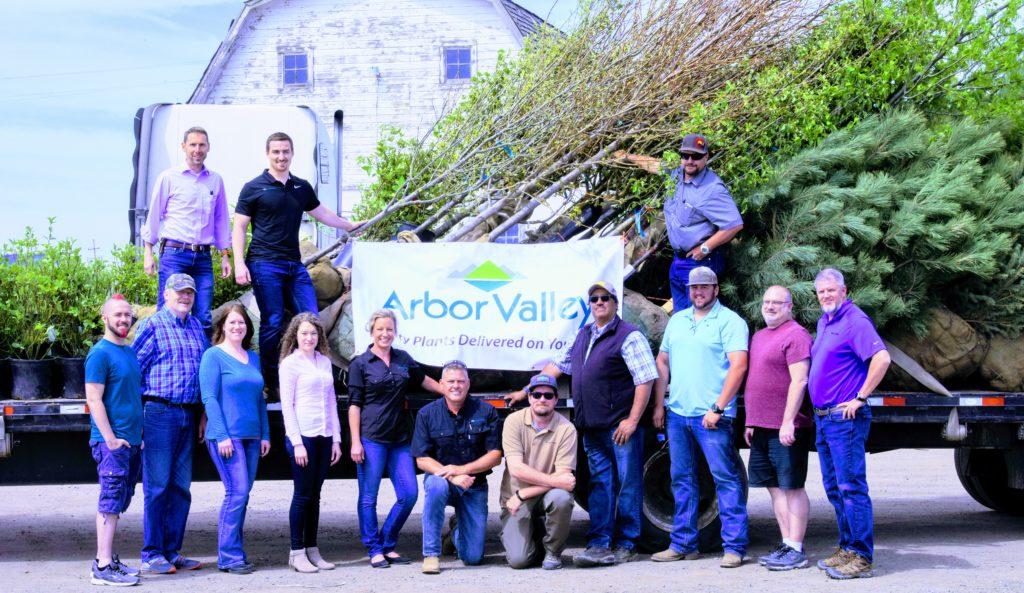Why does Arbor Valley borrow employees from other organizations?
We have been in the industry for almost 40 years and have been working with partners for almost 40 years. It’s just the right way to do things—the most effective method available to share staff. We see a lot of the cost savings and productivity improvements from not having to go out, recruit and train staff, especially skilled labor, when we can temporarily borrow staff from a partner organization. Working with others, we can all complete more projects in the same amount of time and for less money, and that’s a beautiful thing. That’s the goal.
Given the world in which we live today, labor—skilled and unskilled—is fundamentally in short supply and only getting tighter as the Front Range grows. Without working with partners, unstaffed projects would otherwise be delayed or canceled completely.
Partnering allows us to get work done when weather, client demands, or other situations require more labor than the staff we have on hand. Plus, our partner organizations keep their employees working during their open times and earning by lending them to us or others.

For example, this spring, Mother Nature gave us a very narrow window to safely dig trees from the field. Partnering with other organizations that were not yet able to dig in their traditional markets provided not only a skilled team to help dig trees in our fields but the necessary specialized equipment as well. They were able to get their teams working despite the wet winter in their area. Without the work, they may have lost crews to construction or other jobs and may not have had a chance to get them back. In the end, we were able to team up to get all of our trees out for customers despite the narrow window, and we kept their guys productive and paid.
When done right, labor sharing at the beginning or end of the season helps everyone be more productive. As we prepare for the season to begin or put final touches on it, labor sharing really does increase efficiencies.
What type of situation calls for hiring outside employees?
The first one is when we need unskilled staff for temporary jobs. We use temporary staffing organizations like the Veterans Administration, refugee support groups like Project Worthmore, local workforce centers, and other organizations. To make it work well for everyone, we generally need to plan ahead and give two-weeks’ notice to the staffing organization.
We keep these workers from a few days up to a few weeks for very specific projects to help us keep our overall labor costs in check. Our world is very seasonal, so we must be flexible in our staffing model. If we keep staff just in the case we might need them later, it’s very costly. We are trying to keep costs low, so we can pass those efficiencies on to our customers.
For temporary teammates, training beyond safety is usually minimal, and we work to pair them up with our trained employees. Workers’ compensation insurance and other legal requirements are the responsibility of the partner organization.
In this case, Arbor Valley provides all equipment. We really don’t require anything of them besides have a positive attitude, show up on time, and be willing to work with others. Management will break down the larger tasks into bite-sized chunks for these workers, so they can be safe and productive in their jobs.
With skilled labor, we typically get the same individuals coming back to work from partner organizations. With unskilled, we often receive different people, even for the same multiple day project.

When else would you hire outside labor?
Another situation is when we have a project specifically requiring more skilled staff than we have available. It could be anything from construction to landscaping and irrigation—all things we can do normally but our regular staff is already busy, and we don’t want to staff up for something that’s only a few weeks long.
It works well for our partners and for us. We are not recruiting and bringing on skilled staff for just one project, and our partners can use this project as fill in their overall schedule, especially if we are flexible on the timeline.
This looks more like subcontracting a portion of a project to another organization than hiring short-term staff. They bring their own equipment and trained staff, and we just provide direction, acting as the project manager and/or job site supervisor. Similar to the process with unskilled laborers, the partner organizations are responsible for all regulatory and legal requirements.
These skilled staff can work pretty much independently or with only one of our team members in charge. We will pay more for that skill set and level of responsibility, but there are still significant savings over recruiting, hiring and training a full team.
I have found that when working with another team to collaborate on a project, communication needs to increase considerably to ensure everyone is on the same page. We often set up very short meetings throughout the day and use three-by-five cards with instructions, which are easy to put in a pocket and refer to at any time.
When and how many outside laborers do you usually hire?
It varies significantly. That’s one of the challenges. Specific staffing needs are often very difficult to forecast, hence the real value of shared resources. Sharing gives organizations the flexibility they need without the cost of holding extra staff.
We’ll team up with organizations throughout the year, depending on what’s happening in the fields or the nursery. Recently, we combined with another team to do irrigation installation at our new location in Fort Collins on Prospect Road. We asked a group from one of our customers to come in and work with us to ensure that the new nursery was ready before the 2019 season started. It was at the end of their season, and they had no other projects going on. We could be flexible, such that whenever we had a nice day, everyone would go jump in and knock out some of the project, and on rough days, we would take a break. We knew, given a little time—even in the dead of winter, together we could get the work done.
Why is the green industry well-suited to this type of labor solution?
We are in an industry that is traditionally very collaborative and helpful; growers, distributors, landscapers, designers… all need one another to create the vision and make it a reality. Because of the close working relationships, we understand and share each other’s pains. One of the most common pains is that we are all dealing with an uncertain labor pool.
Partners can be challenging to find at times and quite easy during others, but letting people know that you have a need is perhaps the most important piece of the puzzle. There are organizations in your market looking to fill in their employee schedules; you just need to reach out to see if their schedule has a hole that works well with your project. A lot of times, just through our business relationships, we will know who has H2 guys and when their projects are going or closing out, so nurseries like ours may be a good place to start as well.
What are ways to be most successful when using outside labor?
Setting expectations about timeline as well as scope of work is very important. That way partner organizations send the right people, and they don’t have to back out midway through a project due to timing.
Financially it’s important that both groups come up with an agreed-upon billable hour or overall cost from the start. Then, the borrowing group needs to make sure that information gets passed on to their accounting team. From a cashflow standpoint, because it’s labor, that’s a cost that goes out immediately from those organizations, and you usually can’t delay payments more than two weeks. Otherwise, you could place the lending organization into a tough financial spot.
Although our organization doesn’t practice it, other organizations literally loan their staff out and have the borrowing organization hire them. This can be a valid process, especially for a situation where insurance or workers compensation rules are very different for the task at hand than their usual duties at their initial organization. That’s why understanding the scope of the project right at the beginning is so important. If it is significantly different from what that partner does normally, the rules around the project may not be the same.
Let’s take a retail nursery, they have a salesperson that typically just waters plants as part of their job, but if someone would take that individual and put them on a commercial irrigation project where they are running a trencher—that’s a different scope and the retailer’s insurer may consider that outside of the scope of their coverage. In that case, the hiring organization would have to bring that person on as an employee, so he/she is covered properly under the labor regulations.
In the end, with a little forethought, a little flexibility, and a lot of communication, sharing staffing resources can provide significant efficiencies for both the lending and the borrowing organizations.










